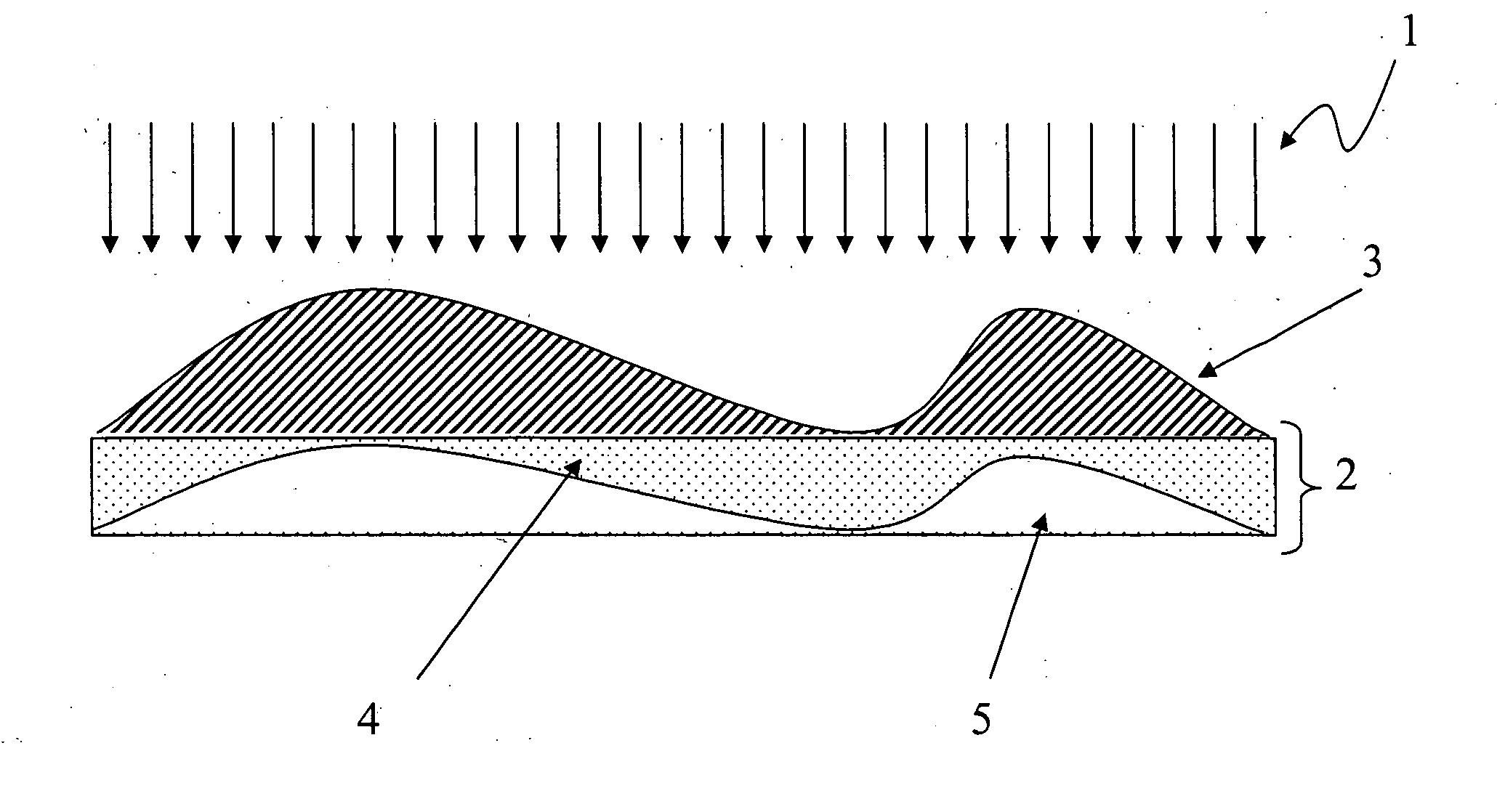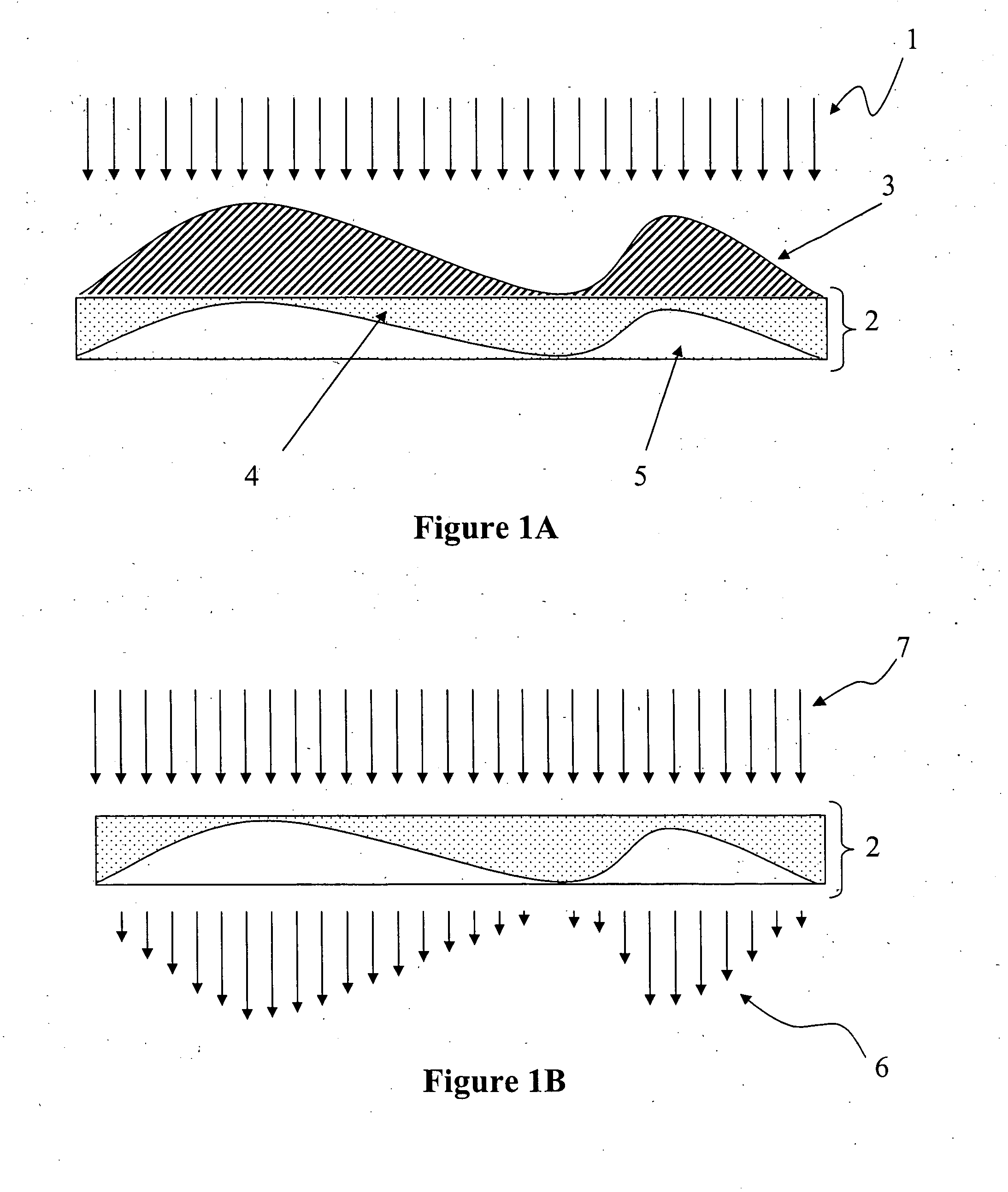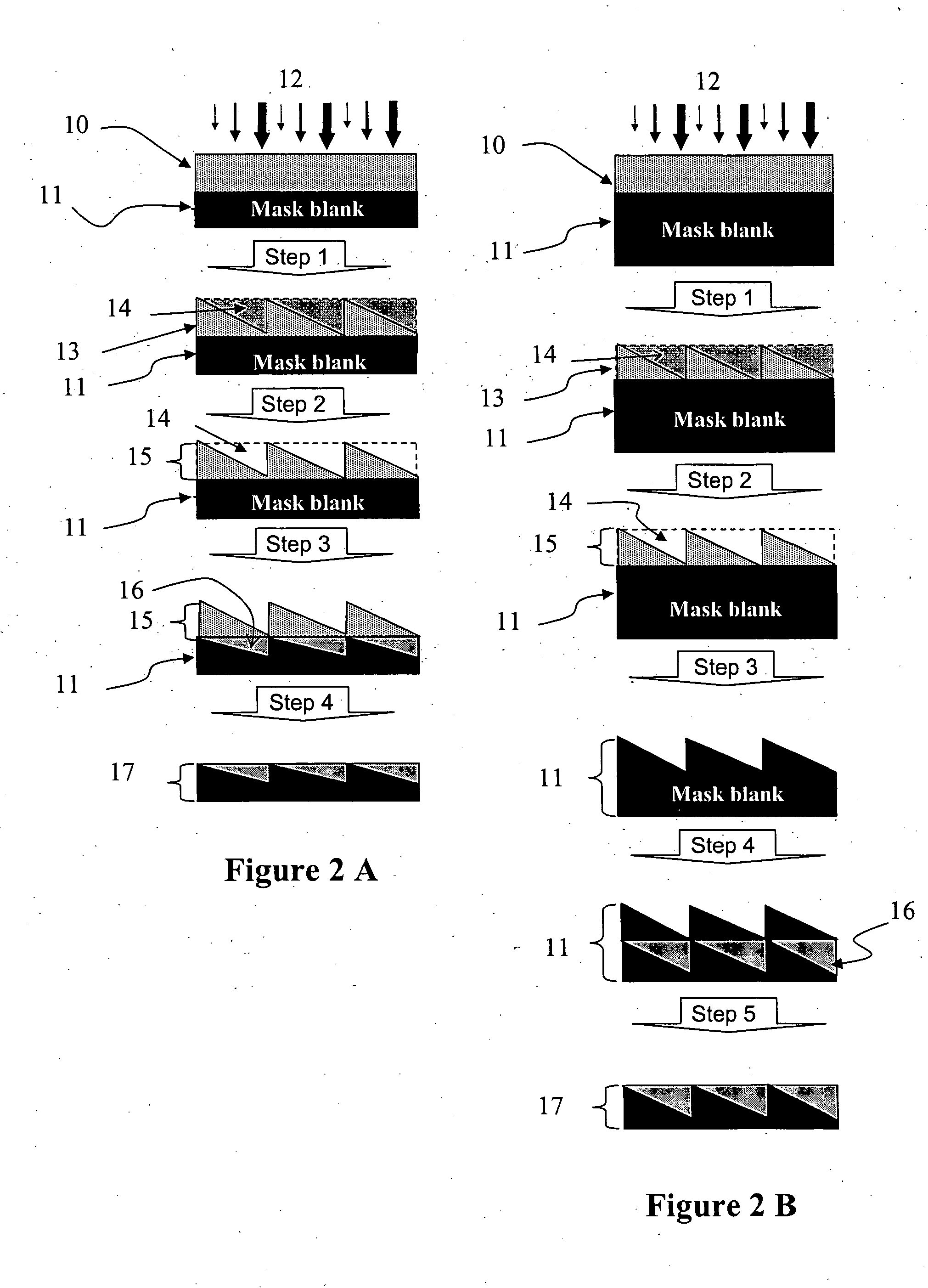Method for making grayscale photo masks and optical grayscale elements
a grayscale photo and optical grayscale technology, applied in photomechanical treatment, instruments, electrical appliances, etc., can solve the problems of insufficient reflection of reflective coatings provided on traditional optical elements for shorter wavelengths, inconvenient production, and high cost of methods, and achieve low cost and high resolution
- Summary
- Abstract
- Description
- Claims
- Application Information
AI Technical Summary
Benefits of technology
Problems solved by technology
Method used
Image
Examples
Embodiment Construction
[0038] According to the present invention, absorbing centers are embedded in a transparent mask blank material by ion implantation through a suitable grayscale structure that controls the penetration of the color centers (implanted ions). The implanted ions in the substrate become the color centers which absorb a specific wavelength of light. As a result of this process, the distribution of the absorbing centers over the mask blank surface is modulated corresponding to the grayscale structure to create a grayscale photo mask.
[0039]FIG. 1A illustrates the manner in which ions emitted in a flat ion beam 1 towards a grayscale structure 3 penetrate into a mask blank 2. As shown in FIG. 1A, the penetration depth of the ions in an ion penetrated portion 4 of the mask blank 2 corresponds to a depth of the grayscale structure 3. Particularly, as shown in FIG. 1A, the penetration depth of the ions into the mask blank 2 corresponding to the shallower portions of the grayscale structure 3 is ...
PUM
 Login to View More
Login to View More Abstract
Description
Claims
Application Information
 Login to View More
Login to View More - R&D
- Intellectual Property
- Life Sciences
- Materials
- Tech Scout
- Unparalleled Data Quality
- Higher Quality Content
- 60% Fewer Hallucinations
Browse by: Latest US Patents, China's latest patents, Technical Efficacy Thesaurus, Application Domain, Technology Topic, Popular Technical Reports.
© 2025 PatSnap. All rights reserved.Legal|Privacy policy|Modern Slavery Act Transparency Statement|Sitemap|About US| Contact US: help@patsnap.com



